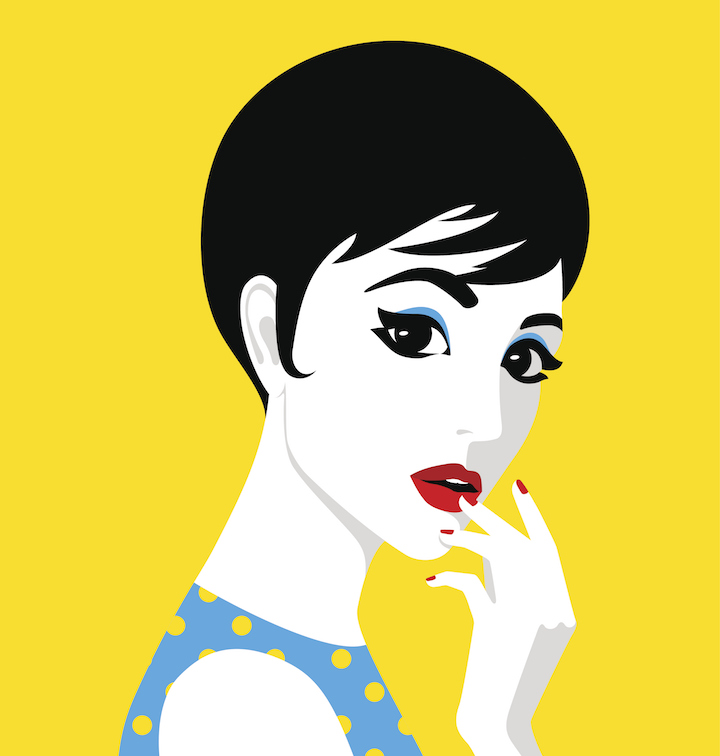Combination skin is the Jekyll and Hyde of skin types: some parts dull, tight, and flaky; other parts greasy and prone to wild, angry breakouts. So what’s a combo skin girl or guy to do? Here, what you may be doing wrong and how to get combination skin right.
We’ve talked about dry skin, acne-prone skin, oily skin, sensitive skin, even dehydrated skin. But now, it’s time to discuss the most widely confusing skin type of all — combination skin.
If I were to be truthful, I’d say my skin definitely leans more towards the combination end of the spectrum, as my T-zone is oily, but my cheeks and forehead tend to get dry. I only ever get breakouts around my jawline and chin and have to make sure to hydrate under my eyes more than other parts of my face. But what does this all mean?
What is combination skin?
Combination skin can be characterized by having some parts of your face that are oilier than others (most likely the T-zone) and parts that are “normal” or dry, including the cheeks, forehead, temples and hairline. People with combination skin tend to be acne-prone in the T-zone area and have larger, more visible pores in that area as well. This is usually combined with dull, dry cheeks. Overall, that means a hot ass mess.

It’s pretty obvious to know if you have combination skin if you have trouble controlling oil around your chin and nose but everywhere else is all good, or if you’re struggling to get rid of the flakiness on your forehead but everywhere else is A-OK.
What causes combination skin?
Combination skin is most likely a result of good ol’ fashioned genetics, but it can also be made worse by the types of skincare products you’re currently using. For example, if you’re trying to banish the oily parts of your skin by using harsh cleansers and toners, you could be drying out the drier parts of your face, while the oilier parts of your face are producing more oil because they are like, “GIRL CAN YOU PLEASE STOP. HELP US!” If you think this might be you, think about the type of cleansers and other products you are using.
(For a primer on why your cleanser may be the culprit, check out our story here.)
Why is combination skin so difficult to manage?
People have a difficult time dealing with combination skin because it’s like … wtf do I do when some parts of my face are a pizza and the others are the Sahara? It might be difficult to find products that address the needs of the both skin types. And it also doesn’t help that a lot of products that tote magical benefits for combination skin are merely marketing ploys. Hashtag fakenewbeauty.
So what can I do, girl?!
Listen. I understand your struggle. It’s hard out here for a combination skin gal or guy. I mean, do we really have to buy two sets of skincare products, one for oily skin and one for dry skin? But I’m going to tell you a secret word that you’ve probably heard of before, and that’s BALANCE.
Much like oily skin, combination skin needs to be balanced to reduce the effect of each skin type. This means a bit of compromise. You don’t have to use completely different products for each part of your face, but you do have to be mindful of the products you are using and how you are using them.
This also means that there is no “free size” (aka Korean for one-size-fits-all) approach to combination skin. I can only give you suggestions, but it’s up to you to try a few different things to see what really works for your skin and what doesn’t.
Tips for combination skin
Take into account just how oily and how dry the different areas of your face are. Does makeup slide right off your nose or is it just really shiny towards the end of the day? Do your dry areas look rough, flaky, and patchy, or are they just a bit tight and uncomfortable? If you need to, write down all of your answers in a journal to refer to.

Once you’ve determined the level of oiliness and dryness, you can move on to choosing the products that will work for you. Keep in mind, for both skin types you’ll need to make sure you are using a gentle, low pH cleanser (like the COSRX Low pH Good MorningGel Cleanser ) as this will help build a great foundation in your skincare routine.
Next, you’ll want to avoid harsh, drying toners and layer on lightweight toners. You can apply one layer on the oilier areas and then go to town on the areas that are dry and dull. This same technique also applies to the rest of your skincare routine. You can use one layer of your moisturizer on the T-zone, but then pat in multiple layers on the drier areas.
If you’re trying to get #sheetfaced, apply a little bit of a lightweight emulsion like the Swanicoco Fermentation Snail Care Emulsion to the dry parts of your skin, then use the sheet mask. You’ll seal in that extra moisture on the dry parts of your face while hydrating the oily parts.
If you are acne-prone in your T-zone only, make sure to apply your chemical exfoliants (like my favorite Swanicoco Coco AHA 10% Peeling Cream) to those areas of the face only to avoid drying out the rest of your skin.
What are your tips for combination skin? Let me know in the comments!
Loading...
